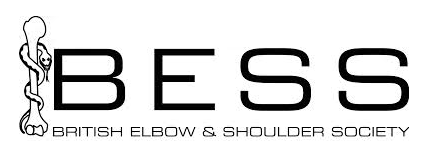Find out how to replace cartilage in your shoulder and get medical help. Learn how to identify whether you need shoulder cartilage replacement. Explore the different methods of fixing cartilage problems in the shoulder joint.
Will your body wear out before you do?
How long can you live before your body starts to hurt? The current population in the UK will live longer than any previous generation and life expectancy is set to rise over the next century. This has been in part due to improved sanitation, living standards and nutrition but also because advances in technology within science and medicine have meant that the processes that lead to disease are better understood so they are diagnosed earlier and treated more efficiently.
Patient-specific medicines are set to revolutionise the treatment of chronic diseases in the next few years. Whilst these are exciting advancements, the payoff for living longer is that our musculoskeletal system was simply not designed to last that long. The result is that movement becomes painful, our joints wear out and everyday tasks such as getting dressed can be a burden.
What is the musculoskeletal system?
The musculoskeletal system is a complex framework of bones, muscles, tendons and ligaments that are designed to protect our vital organs and keep us moving and upright. This delicate balance of moving parts has evolved over hundreds of thousands of years to withstand significant external and internal forces.
The leap in human longevity has occurred within a comparatively short time and the body has not had sufficient time to evolve to meet the physiological demands of the increased lifespan. The result, simply put, is that parts of the body wear out. One of the more common parts to fail are joints.
A joint is formed when two or more different bones meet and move with respect to each other. Each joint is highly adapted for the function it performs. To keep the bones moving smoothly, the ends of the bone that are in contact, known as the articulating surfaces, are covered in a smooth white spongy substance known as articular cartilage.
Over time this cartilage can become roughened, thinned or completely degraded and worn out, and this is referred to as osteoarthritis. The hip and knee joints are most commonly affected, but arthritis can in theory affect any joint in the body including the small joints of the hand, feet and spine.
This article will focus on the glenohumeral joint, more commonly known as the shoulder joint, and will explore the possibility and feasibility of cartilage replacement within the joint.
Shoulder Joint Anatomy
The shoulder region has three joints, but when most people talk about the shoulder joint, they are usually referring to the glenohumeral joint, which is a ball and socket joint. This design of joint provides the greatest range of movement and the purpose of the glenohumeral joint is to position the hand in space around the body.
The ball is composed of the head of the humerus, which is found on the upper part of the humerus or arm bone. The socket is composed of the glenoid fossa which is part of the scapula, or shoulder blade. These articulating surfaces are covered in articular cartilage tissue. Articular cartilage is composed primarily of type II collagen that is well-hydrated to keep the cartilage softer than bone to cushion the forces that are applied through the joint during normal motion.
Four rotator cuff muscles surround the humeral head and keep it stabilised and centred onto the glenoid socket. The rotator cuff muscles move the shoulder joint and arm.
Over time the cartilage covering the humeral head and the glenoid can become thinner, less- hydrated and more brittle. This is partly age-related as the composition of proteins within the cartilage changes. Other factors that contribute to cartilage degradation include excess forces across the joint surfaces that may occur over time with repetitive movements in physical work or sport. A single episode of trauma leading to a fracture or dislocation of the joint can trigger the onset of cartilage degradation.
The degree of cartilage loss is graded from 0 to IV.
- Grade 0 – normal cartilage
- Grade 1 – the cartilage softens and there is some swelling
- Grade 2 – partial-thickness loss with superficial fissures or cracks on the surface of the cartilage. On arthroscopy, there are wispy tufts of cartilage at the surface.
- Grade 3 – The cartilage fissures extend deeper to the bone, but there is still some cartilage overlying the bone
- Grade 4 – total loss of cartilage exposing the underlying bone
If both sides of the joint (humerus and glenoid) are affected by Grade IV cartilage wear, this is known as bone-on-bone contact.
Once the cartilage is lost it is very difficult to replace. The body does try and repair itself, but instead of making smooth cartilage, it makes extra bits of bone, known as osteophytes. These small lumps of bone (osteophytes) that cause more pain as they rub against each other, and restrict joint movement further.
Symptoms of Shoulder Joint Arthritis
Unlike having a sudden fall, where the pain is instant, the pain from arthritis tends to gradually increase over time. My patients describe a deep ache within the shoulder joint that is worse on movement. The pain is often present at night time and can wake patients up at night leaving them tired and irritable during the day.
Movements become increasingly restricted and simple tasks such as reaching around to the back seat of a car or doing up a bra or dress zip, becomes painful and difficult. Patients feel and hear a creaking, grinding or cracking from the joint as the shoulder rotates.
Can you replace cartilage in your shoulder?
The simple answer is no. The body does not naturally form new cartilage and there are no synthetic equivalents available for the shoulder joint at present.
What is the treatment for shoulder joint arthritis?
In the very early stages of shoulder arthritis, taking painkillers and doing some physiotherapy to keep the muscles around the shoulder girdle in good condition can be helpful. Some patients get some pain relief from injections of hyaluronic acid into the joint. Hyaluronic acid is a natural component of articular cartilage and it acts like an oily lubricant within the joint. Results from this type of injection vary considerably and outcomes are neither guaranteed nor permanent.
Shoulder arthroscopy may be helpful to assess the joint by placing a camera inside the joint and looking directly at the cartilage to see how much has been affected. Loose bits of cartilage that may be floating around the joint can be removed. Osteophytes can be trimmed or shaved down and the capsule surrounding the shoulder can be released to gain more movement. This is known as debridement of the joint.
Microfracture is a technique in which multiple small holes are pierced through the cartilage into the underlying bone to try to stimulate new tissue formation. Results from this technique vary.
There are other techniques that have been developed to take cartilage cells from a joint and expand the cell population by growing them in a laboratory. The new cells are then re-implanted into the joint. This has mainly been used for cartilage defects in the knee joint and is not a mainstream intervention in the shoulder.
Whilst these interventions can help to manage the symptoms for a while, ultimately the only treatment for pain related to advanced arthritis is to replace the shoulder joint with an artificial joint.
Are there different types of shoulder joint replacements?
Yes absolutely!
There are two things to consider when choosing the right implant for a patient.
- The design of the implant
- What the implant is made from
Implant design
Broadly speaking the design of a shoulder replacement is either an anatomical replacement or a reverse-geometry design implant. If the rotator cuff muscles surrounding your shoulder are intact and functioning, then an anatomical replacement, in which the head is replaced with a similarly shaped sphere and the socket is replaced with a liner, may be used.
If the rotator cuff muscles are torn then this type of implant will not work well and can actually cause further pain and restriction in movements. To prevent this, the reverse-anatomy replacement was designed, in which the head of the humerus is replaced with an artificial socket and the glenoid socket is replaced with a sphere.
This is a highly specialised procedure and should only be performed by surgeons who have been trained in this type of surgery.
Implant materials
The main concern with any type of joint replacement is that it can wear out. The factors affecting how quickly the joint wears out include what it is made out of. Traditional implants were made from a metal head with a plastic liner. The metal would rub against the plastic and wear the plastic out. Other materials such as pyro-carbon or ceramics have been developed to replace the head. These materials are less abrasive on the liner and the plastic remains intact for longer.
How do I choose the right implant for my patients?
Each patient I treat is assessed as an individual with a unique set of functional demands. Factors that influence the choice of the implant include:
- Activity levels of the patient
- Cause of the arthritis
- Whether the rotator muscles are intact
- Other medical problems that the patient may have
- Bone quality and presence of bone deformities
- Age of the patient
Age itself is not a barrier to joint replacement surgery and patients in their 90s can undergo surgery if they are relatively fit.
How long does it take to recover from shoulder joint replacement surgery?
Shoulder joint replacement is a big undertaking and whilst the pain from arthritis goes immediately after surgery, the pain from the surgery itself will take a few weeks to settle down.
A course of physiotherapy is needed to regain the strength and movement of the shoulder. As a rough guide, I advise my patients that the first two weeks are the most painful and then the pain decreases, but during the first six weeks whilst the tissues are healing the shoulder may continue to be painful.
The total recovery period can take up to a year before you are no longer thinking about your shoulder. This is a generous estimate and I have had patients that go back to swimming and other sports between 8 to 12 weeks.
What advice would I give to someone who has shoulder arthritis?
Firstly, it is important to know what you are dealing with early. This means getting a proper consultation and imaging by a shoulder specialist. I take plenty of time to listen to my patients’ concerns and expectations. Together we develop a plan that is specific to their needs with realistic goals and timelines.
It is important that my patients feel fully informed and confident at all times about their care plan. This is done as a collaborative approach, starting with my PA at the time that you book an appointment through to imaging, and physiotherapy. If surgery is needed, the in-patient experience includes a pre-operative assessment, discussing the choice of anaesthesia with the anaesthetist, specialist theatre teams, and outstanding nursing care in the hospitals where I operate and supported discharge home supervised by physiotherapists and occupational therapists.
Post-operative rehabilitation is fundamental for a successful outcome and finding a good physiotherapist to work with you is crucial.
As you can see there are a lot of people involved in the process and teamwork is key. This is facilitated by good communication and transparency throughout to support you on your journey.
If you think you may have shoulder arthritis or any other problem with your shoulder that you would like to discuss please book a consultation appointment here.
Ms Susan Alexander is a Consultant Orthopaedic Surgeon and President of the Independent Doctors Federation.
She specialises in all shoulder conditions, including frozen shoulder, rotator cuff tears, dislocations and arthritis. Based in London, she practises at Fortius Clinic and King Edward VII’s Hospital. Ms Alexander is highly experienced in minimally invasive (keyhole) shoulder surgery and is known for her meticulous, patient-centred and holistic approach.
She focuses on accurate diagnosis, bespoke treatment planning, and ongoing support throughout recovery. Learn more about Ms Susan Alexander here.









